8 L.A. night hikes to escape the heat and experience awe
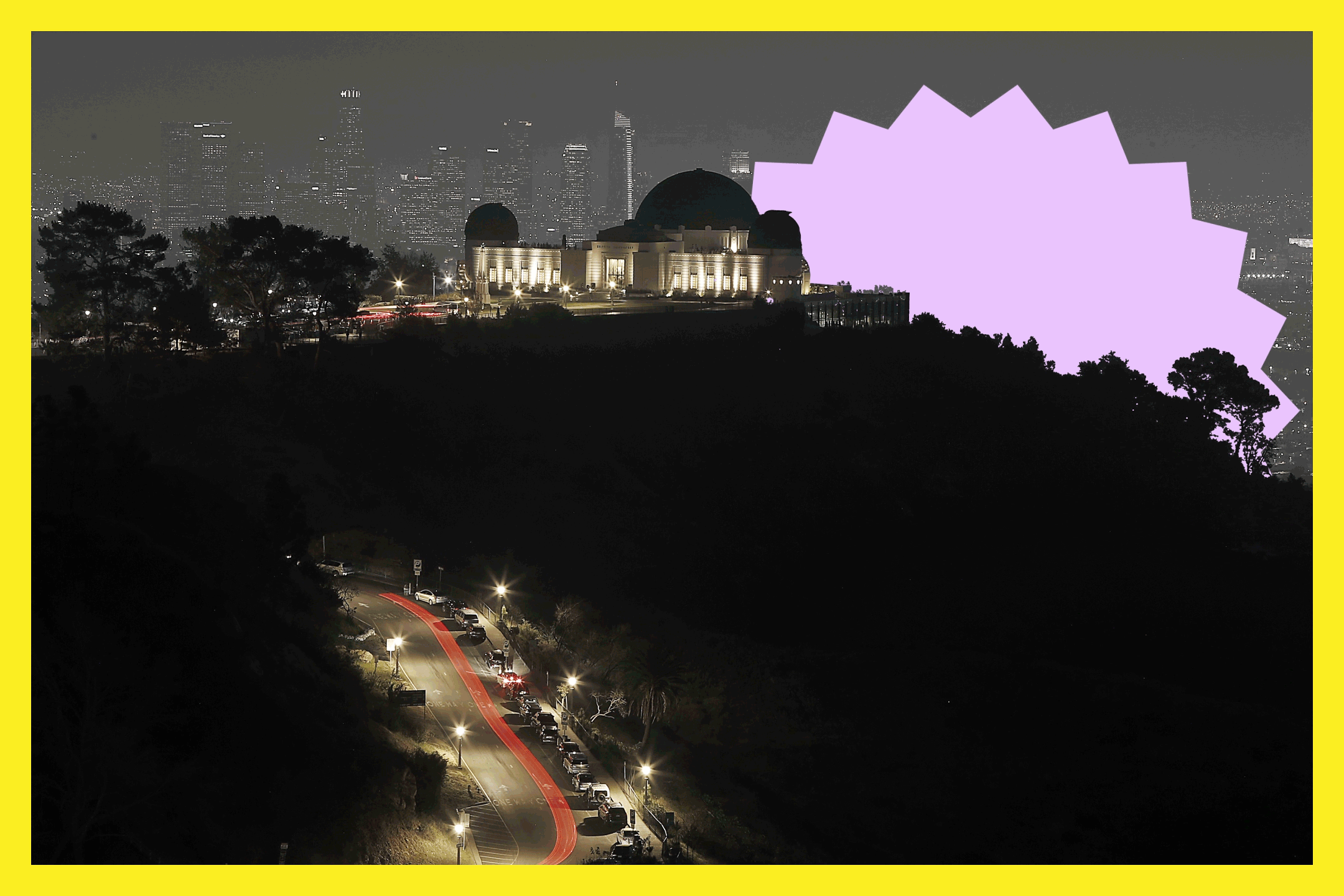
- Share via
My coworkers and I were deep in conversation when we all gasped.
We’d crested a hill in Griffith Park, and rising just as we did up the hill was the strawberry moon.
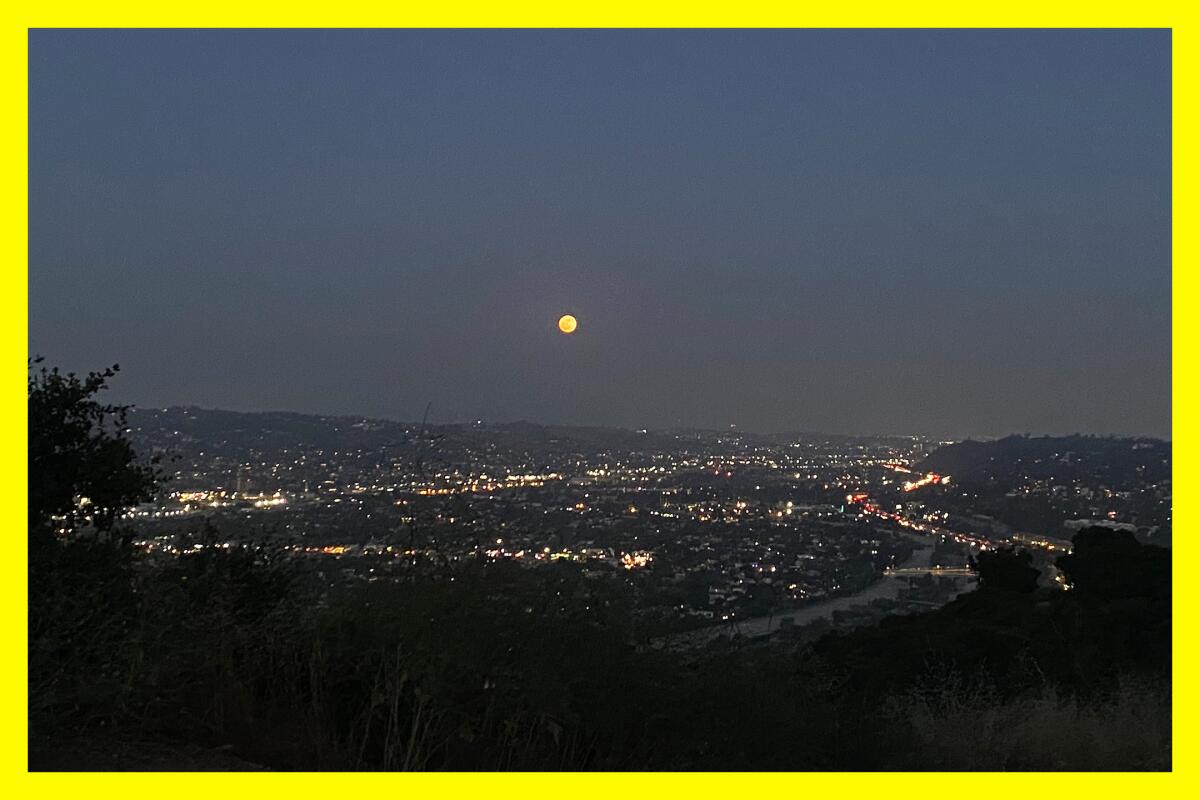
All conversation ceased for a moment as we took in the view, the headlights of thousands of drivers on the 5 Freeway, twinkling street lamps and the orange glow from homes in nearby Atwater Village and beyond — and that moon, low in the sky, a reddish tint thanks to its proximity to the horizon.
You are reading The Wild newsletter
Sign up to get expert tips on the best of Southern California's beaches, trails, parks, deserts, forests and mountains in your inbox every Thursday
You may occasionally receive promotional content from the Los Angeles Times.
That’s when I really fell in love with full moon hikes, standing there eating strawberry-flavored snacks with my giddy colleagues as we celebrated our luck of arriving at Five Points at the perfect moment.
Hiking during full moons, and sometimes just on a nice evening, is a semi-regular ritual of mine. Not only does it offer a different type of sensory experience than daytime treks — including croaking frogs, hooting owls and chirping crickets — but it’s also a more tolerable way to get outdoors during the hottest months of the year.
August’s full moon will be brightest and boldest on Monday. And if you can’t make it on exactly that evening, you can typically hike the night before or after a full moon and get a nice show.
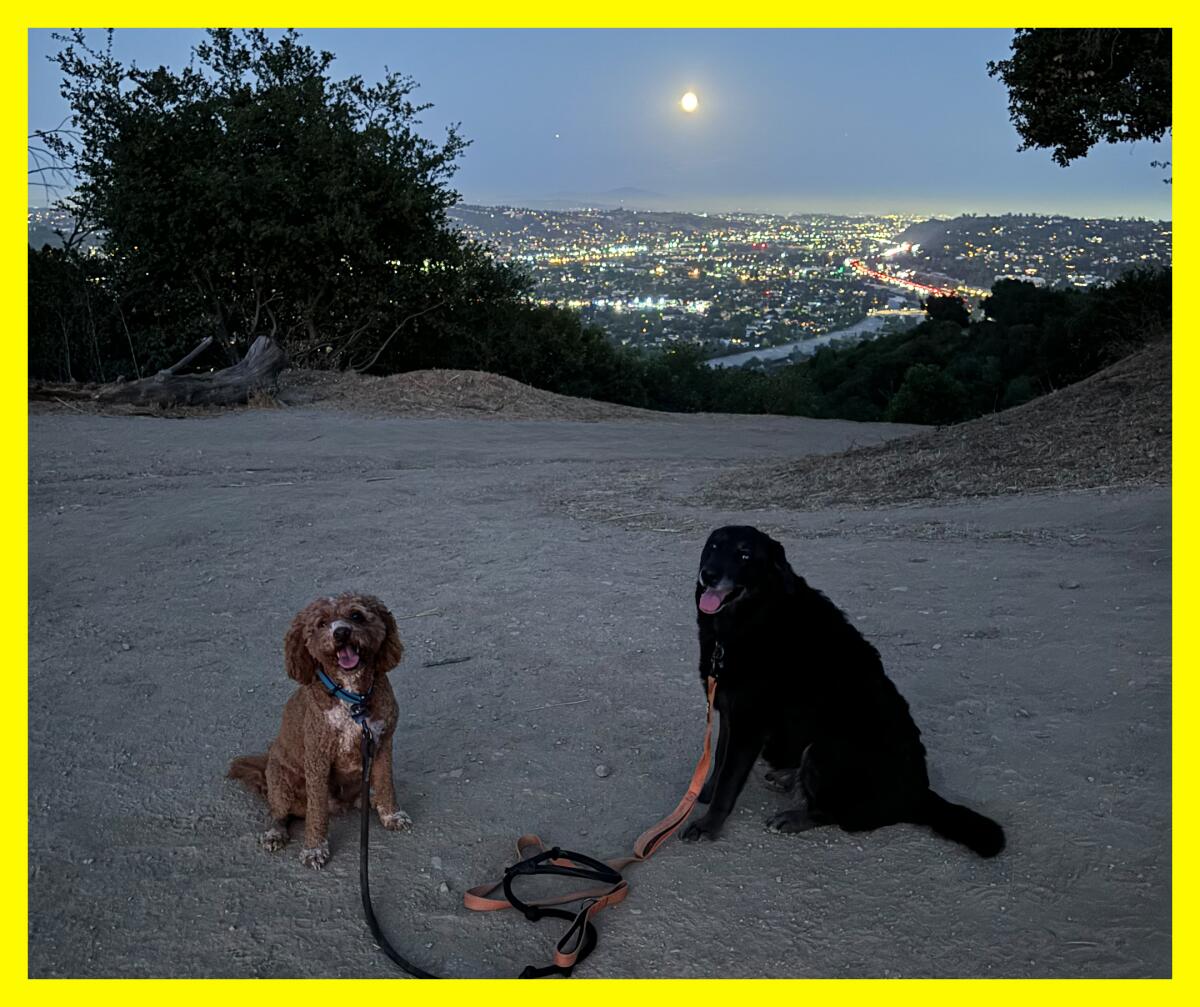
The first thing you need for an evening hike is hiking companions. Don’t get me wrong, I love a solo hike — just me, my dog and my satellite communicator out in the woods. But hiking at night alone isn’t something I would recommend, as many of our native wildlife — including mountain lions, bears and coyotes — are most active then.
The next thing to consider is what gear you’d like to bring. Sturdy hiking boots are helpful because if you trip or stumble, your ankles are more protected. A flashlight or headlamp is good to have, although some hiking groups discourage their usage, unless they come with the option to switch to a red tint, as our eyes are less affected by the longer wavelengths of red light. I like to bring a flashlight with a UV option because it not only saves your nighttime vision but also allows you to see (and avoid) scorpions, which glow under UV light.
As with any hike, you’ll want to check the weather and pack accordingly. My colleagues and I were up at Griffith Park on a particularly windy evening for a full moon hike and were glad we’d layered up. From there, you should bring whatever you usually need on a hike, like poles, snacks and water.
As for where to do a full-moon hike, there is no shortage of options. I look for urban hikes with wide paths to high points with panoramic views of L.A. County. Some hiking spots close at sunset, so you’ll want to check the times that trails are open. When parking, look for gates. You don’t want to come down from your hike to find a locked gate blocking in your car.
If you’d be more comfortable with a group, you’re in luck: There are many organized full moon and night hikes in L.A. County this time of year. I’ve rounded up some of them below:
- The Eaton Canyon Nature Center Associates hosts a monthly moonlight walk, usually on Fridays closest to the full moon. You can join them at 6:45 p.m. Friday at the Eaton Canyon Nature Center. The hike leaves at 7 p.m. sharp so being on time is quite important. Learn more at ecnca.org.
- The Sierra Club Angeles Chapter hosts its moonlight hike on Saturday, meaning the moon will be fairly bright for that outing. This is a moderately paced five(ish)-mile hike through Griffith Park. Sierra Club membership is not required. Arrive by 6:45 p.m. to sign liability waivers. The hike leaves at 7. You can learn more and register at meetup.com.
- We Explore Earth, a nonprofit outdoors group, will host a free full moon hike from 5:30 to 9:30 p.m. Monday in Elysian Park. Participants can also partake in a 30-minute yoga session during the event and stargaze through telescopes that group leaders will bring on the hike. Register at eventbrite.com.
- TreePeople, an L.A. nonprofit, will host a moonlight hike at Coldwater Canyon Park in Beverly Hills on Aug. 23. It costs $20 per person, kids under 15 cost $10. You can learn more and register at its website.
- Vasquez Rocks Natural Area hosts a monthly twilight and early full moon hike. The hike is free but donations to the Vasquez Rocks Nature Center Associates are appreciated. August’s event is full (with more than 100 people on its waiting list), but September and October are open for registration.
- For my Wilders near Riverside or San Bernardino (or for those wanting to explore a new place), the Wildlands Conservancy will host a night hike Saturday at its Oak Glen Preserve in Yucaipa. You can learn more and register here.
For those who feel nervous about hiking at night but still want to experience the glory of a summer night sky in person, try these options:
- The Lancaster Museum of Art and History will host a one-mile astronomy-themed tour Saturday through the Prime Desert Woodland Preserve in Lancaster. Weather permitting, there might be telescopes available to gaze through. Register at eventbrite.com.
- Orange County Parks will host a full moon nature journaling session Sunday in the gorgeous Black Star Canyon. Registration required. Sign up at letsgooutside.org.
I personally enjoy going to Griffith Park for full moon and evening hikes because it offers so many great views. I usually park near the merry go-round. From there, my friends and I usually head to either 5-Points (lower right corner of this map), or Mt. Hollywood.
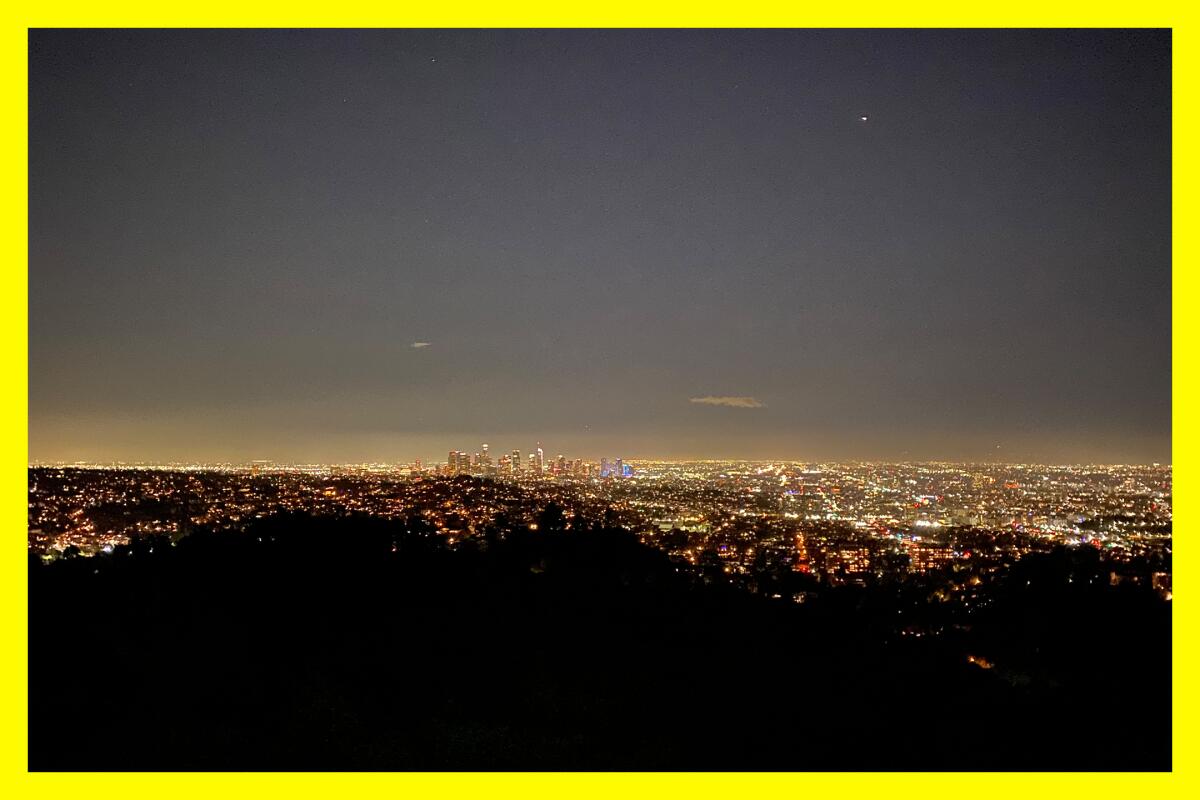
Mt. Hollywood in Griffith Park remains my favorite — especially for a full moon hike. It offers panoramic views of L.A. County, and there are picnic tables where you can take a break before heading down.
That said, it’s a popular spot. My friend Laura and I hiked up to Mt. Hollywood one evening and sat quietly admiring the view, commenting on how remarkable it was that we were in a county of 10 million people, in the middle of the city, and yet we were mostly alone in this beautiful place.
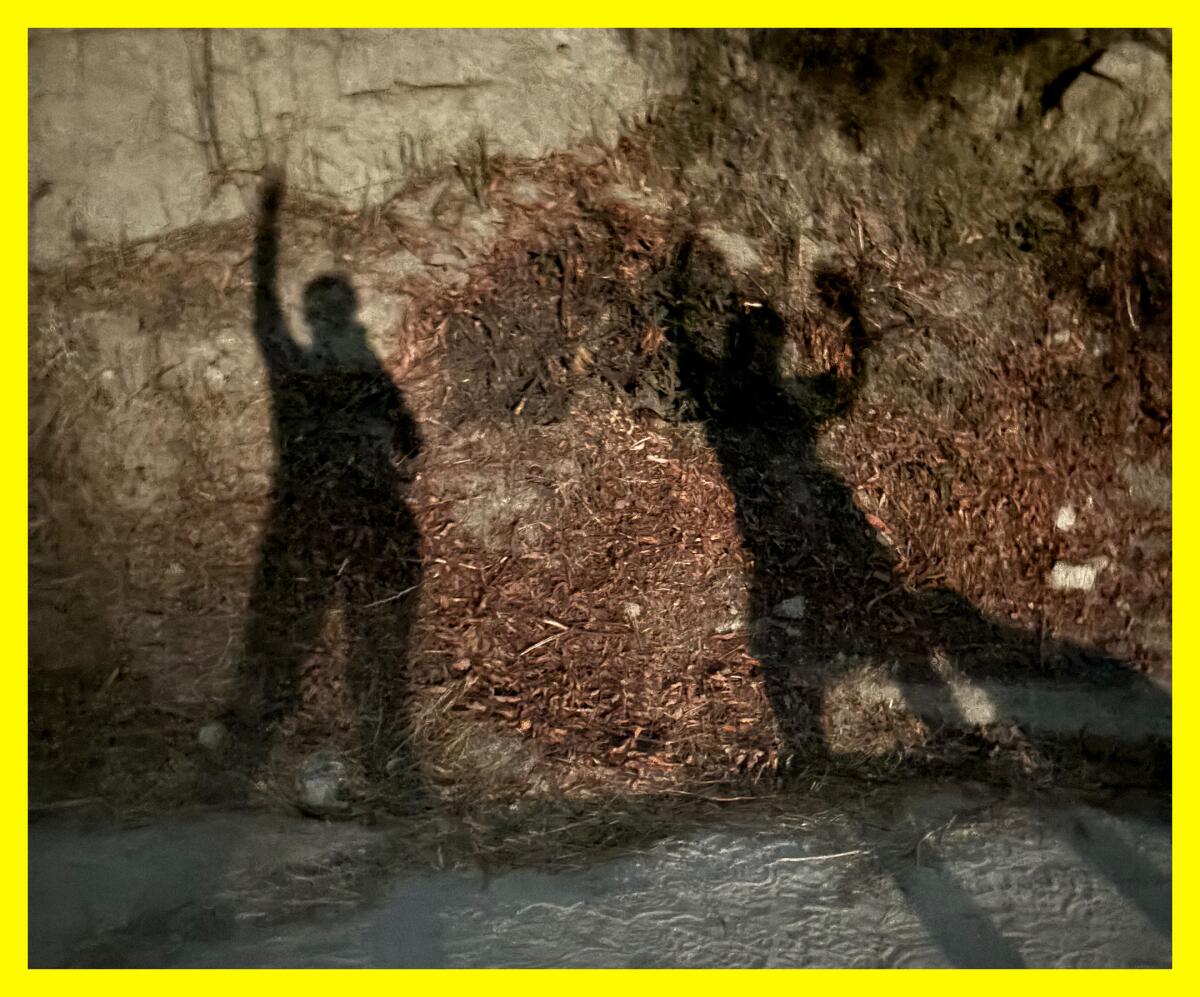
And then, we heard the thump of a bass. Dozens of hikers covered in glowing necklaces and bracelets emerged from the trail, dancing joyfully. Laura and I laughed really hard. They were such a fun group, I was tempted to ask how I could join. After all, a full moon over Los Angeles is something best appreciated with friends, new and old.

3 things to do
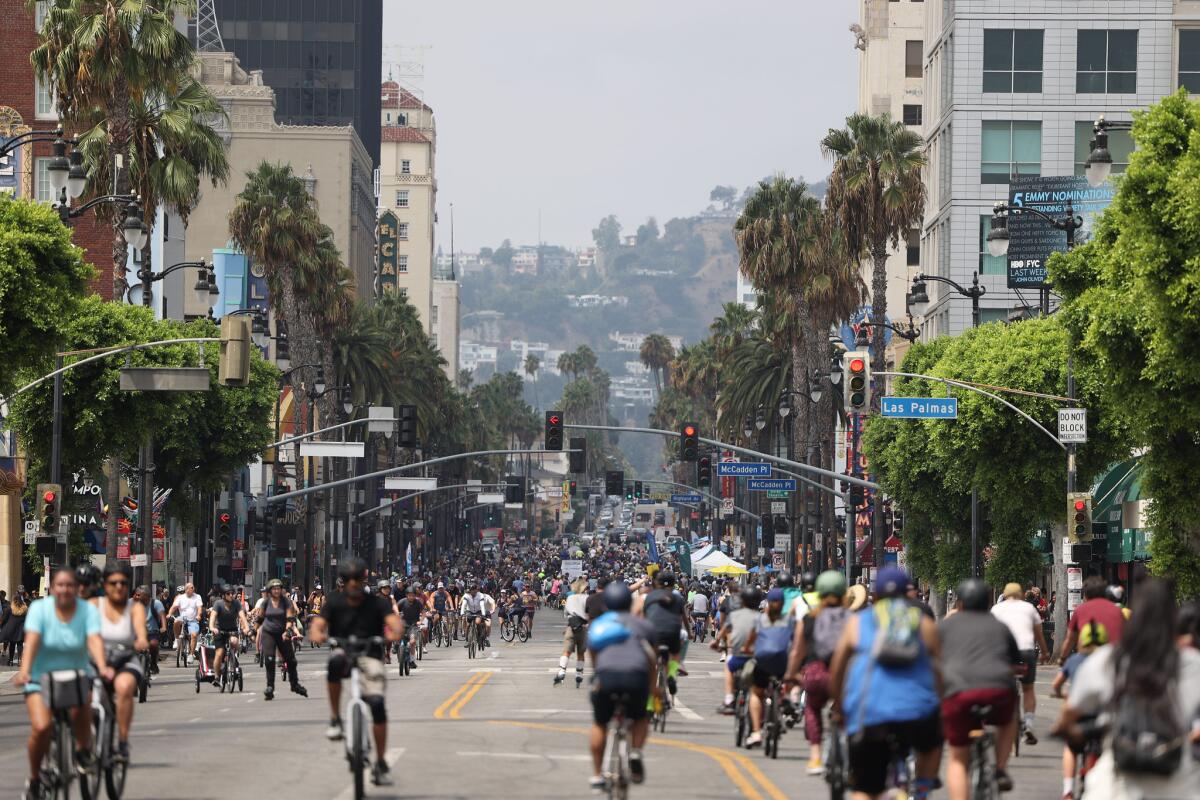
1. Bike almost seven miles of car-free streets in Hollywood
Walk, jog, bike, roller skate or skateboard along 6.6 miles of car-free streets Sunday as CicLAvia takes over the streets of Tinseltown for the nonprofit’s 54th event in L.A. From 9 a.m. to 4 p.m., you can traverse the route, which connects East Hollywood, Hollywood and West Hollywood. Visit any of the five hubs along the route for family-friendly activities, restrooms, free water refill stations and basic bike repair. There will also be plenty of spots to eat along the way. Please note that, although certain types of e-bikes are permitted, electric scooters and other nonpeople-powered vehicles are not allowed, outside of motorized wheelchairs and related vehicles for people with disabilities. Learn more at ciclavia.org.
2. Collect data on local wildlife in Harbor City
Join jr. urban ecologist Ryan Kinzel from 8 to 10 a.m. Saturday at Ken Malloy Harbor Regional Park (25820 Vermont Ave.) in Harbor City for a so-called BioBlitz. At this L.A. City Recreation & Parks event, you’ll use the app iNaturalist to collect data on species that live around Machado Lake and the rest of the park. Organizers advise you bring sunscreen, water and a charged phone with the iNaturalist app downloaded. Learn more at the L.A. Parks’ Facebook page.
3. Take a free compass and map course in Fountain Valley
Getting lost is any hiker’s nightmare. Sports Basement, an outdoor goods retailer, will host a free introductory course to using maps and navigation tools from 6 to 8 p.m. Wednesday. Participants will learn how a compass works and how to read topography maps and practice orienting a map and taking a bearing. Register at eventbrite.com.

The must-read
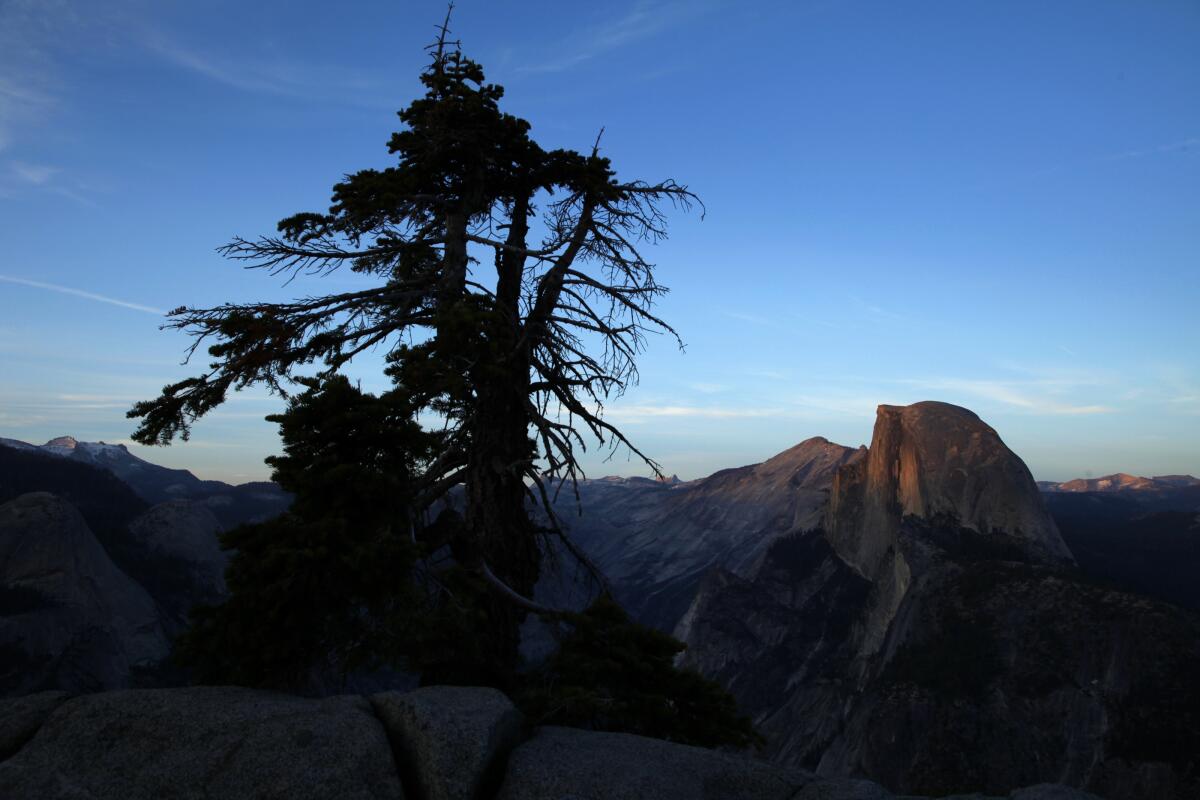
The death of 20-year-old Grace Rohloff while hiking Yosemite’s Half Dome has reignited debates about how to improve the safety of the iconic outdoors destination. The hike to Half Dome is 14 to 16 miles, and a permit is required to use the cables, installed in 1919, that visitors use to reach the top. You can read part of that debate in our letters to the editor this week. Connie Stewart of Santa Monica argues that National Park Service officials should permanently remove the cables, which are currently available seasonally. “Half Dome is dangerous. And that’s as it should be. National parks aren’t Disneyland; they are part of nature,” Stewart writes. Conversely, Bill Smart of Santa Barbara suggests that the problem lies in too many inexperienced hikers attempting to summit Half Dome. “Let the cables be. Screen permit applicants more carefully, as the danger lies with some of them, not the cables,” Smart writes.
Regardless of where you are adventuring, please be safe out there, friends. When in doubt, turn around. The mountains will be there next time you return.
Happy adventuring,

P.S.
After I wrote a local campground guide in May, many of you graciously shared some of your favorites too. I rounded up the five best recommendations here.
I loved the advice from reader Jan Rasmussen, who said she, her husband and their dog head to Table Mountain near Wrightwood in Angeles National Forest over the Fourth of July to escape the explosive sound of fireworks. Brilliant!
For more insider tips on Southern California’s beaches, trails and parks, check out past editions of The Wild. And to view this newsletter in your browser, click here.
Sign up for The Wild
We’ll help you find the best places to hike, bike and run, as well as the perfect silent spots for meditation and yoga.
You may occasionally receive promotional content from the Los Angeles Times.




